
THE ULTRA-SHORT VERSION
DVOA measures a team’s efficiency by comparing success on every single play to a league average based on situation and opponent.
THE SHORT VERSION
DVOA is a method of evaluating teams, units, or players. It takes every single play during the NFL season and compares each one to a league-average baseline based on situation. DVOA measures not just yardage, but yardage towards a first down: Five yards on third-and-4 are worth more than five yards on first-and-10 and much more than five yards on third-and-12. Performance is also adjusted for the quality of the opponent. DVOA is a percentage, so a team with a DVOA of 10.0% is 10% better than the average team, and a quarterback with a DVOA of -20.0% is 20% worse than the average quarterback. Because DVOA measures scoring, defenses are better when they are negative. Every year is normalized so the average for that year is 0%. For more detail, read below.
DVOA EXPLAINED
One running back runs for three yards. Another running back runs for three yards. Which is the better run?
Several factors can differentiate one three-yard run from another. What is the down and distance? Is it third-and-2, or second-and-15? Where on the field is the ball? Does the player get only three yards because he hits the goal line and scores? Is the player’s team up by two touchdowns in the fourth quarter and thus running out the clock, or down by two touchdowns and thus facing a defense that is playing purely against the pass? Is the running back playing against the porous defense of the Bears, or the stalwart defense of the 49ers?
Conventional NFL statistics value plays based solely on their net yardage. The NFL determines the best players by adding up all their yards no matter what situations they came in or how many plays it took to get them. Now, why would they do that? Football has one objective—to get to the end zone—and two ways to achieve that, by gaining yards and achieving first downs. These two goals need to be balanced to determine a player’s value or a team’s performance. All the yards in the world won’t help a team win if they all come in six-yard chunks on third-and-10.
The popularity of fantasy football only exacerbates the problem. Fans have gotten used to judging players based on how much they help fantasy teams win and lose, not how much they help real teams win and lose. Typical fantasy scoring further skews things by counting the yard between the one and the goal line as 61 times more important than all the other yards on the field (each yard worth 0.1 points, a touchdown worth 6.0). Let’s say Justin Jefferson catches a pass on third-and-15 and goes 50 yards but gets tackled two yards from the goal line, and then Alexander Mattison takes the ball on first-and-goal from the two-yard line and plunges in for the score. Has Mattison done something special? Not really. When an offense gets the ball on first-and-goal at the two-yard line, they are going to score a touchdown five out of six times. Mattison is getting credit for the work done by the passing game.
Doing a better job of distributing credit for scoring points and winning games is the goal of DVOA, or Defense-adjusted Value Over Average. DVOA breaks down every single play of the NFL season, assigning each play a value based on both total yards and yards towards a first down, based on work done by Pete Palmer, Bob Carroll, and John Thorn in their seminal book, The Hidden Game of Football. On first down, a play is considered a success if it gains 45% of needed yards; on second down, a play needs to gain 60% of needed yards; on third or fourth down, only gaining a new first down is considered success.
We then expand upon that basic idea with a more complicated system of “success points,” improved over the past 20 years with a lot of mathematics and a bit of trial and error. A successful play is worth one point, an unsuccessful play zero points with fractional points in between (for example, eight yards on third-and-10 is worth 0.54 “success points”). Extra points are awarded for big plays, gradually increasing to three points for 10 yards (assuming those yards result in a first down), four points for 20 yards, and five points for 40 yards or more. Losing three or more yards is -1 point. Interceptions average -4.5 points, with an adjustment for the length of the pass and the location of the interception (since an interception tipped at the line is more likely to produce a long return than an interception on a 40-yard pass). A fumble is worth anywhere from -1.3 to -3.0 points depending on how often a fumble in that situation is lost to the defense—no matter who actually recovers the fumble. There is a bonus given for a touchdown that acknowledges that the goal line is significantly more difficult to cross than the previous 99 yards (although this bonus is nowhere near as large as the one used in fantasy football).
Every single play run in the NFL gets a “success value” based on this system, and then that number gets compared to the average success values of plays in similar situations for all players, adjusted for a number of variables. These include down and distance, field location, time remaining in game, and the team’s lead or deficit in the game score. Teams are always compared to the overall offensive average, as the team made its own choice whether to pass or rush. When it comes to individual players, however, rushing plays are compared to other rushing plays, passing plays to other passing plays, tight ends to tight ends, wideouts to wideouts, and so on.
Going back to our example of the three-yard rush, if Player A gains three yards under a set of circumstances in which the average NFL running back gains only one yard, then Player A has a certain amount of value above others at his position. Likewise, if Player B gains three yards on a play on which, under similar circumstances, an average NFL back gains four yards, that Player B has negative value relative to others at his position. Once we make all our adjustments, we can evaluate the difference between this player’s rate of success and the expected success rate of an average running back in the same situation (or between the opposing defense and the average defense in the same situation, etc.). Add up every play by a certain team or player, divide by the total of the various baselines for success in all those situations, and you get VOA, or Value Over Average.
Of course, the biggest variable in football is the fact that each team plays a different schedule against teams of disparate quality. By adjusting each play based on the opposing defense’s average success in stopping that type of play over the course of a season, we get DVOA, or Defense-adjusted Value Over Average. Rushing and passing plays are adjusted based on down and location on the field; passing plays are also adjusted based on how the defense performs against passes to running backs, tight ends, or wide receivers. Defenses are adjusted based on the average success of the offenses they are facing. (Yes, technically the defensive stats are “offense-adjusted.” If it seems weird, think of the “D” in “DVOA” as standing for “opponent-Dependent” or something.)
The biggest advantage of DVOA is the ability to break teams and players down to find strengths and weaknesses in a variety of situations. DVOA can be separated not only by player, but also by down, or by week, or by distance needed for a first down. This can give us a better idea of not just which team is better, but why, and what a team has to do in order to improve itself in the future. You will find DVOA used in this book in a lot of different ways—because it takes every single play into account, it can be used to measure a player or a team’s performance in any situation. All Pittsburgh third downs can be compared to how an average team does on third down. Sam Howell and Jacoby Brissett can each be compared to how an average quarterback performs in the red zone, or with a lead, or in the second half of the game.
Since DVOA compares each play only to plays with similar circumstances, it gives a more accurate picture of how much better a team really is compared to the league as a whole. The list of top DVOA offenses on third down, for example, is more accurate than the conventional NFL conversion statistic because it takes into account that converting third-and-long is more difficult than converting third-and-short, and that a turnover is worse than an incomplete pass because it eliminates the opportunity to move the other team back with a punt on fourth down.
One of the hardest parts of understanding a new statistic is interpreting its scale, or what numbers represent good performance or bad performance. We’ve made that easy with DVOA. For each season, ratings are normalized so that 0% represents league average. A positive DVOA represents a situation that favors the offense, while a negative DVOA represents a situation that favors the defense. This is why the best offenses have positive DVOA ratings (in 2022, Kansas City led the NFL at 25.2%) and the best defenses have negative DVOA ratings (with San Francisco on top in 2022 at -14.1%).
The scale of offensive ratings is wider than the scale of defensive ratings. In most years, the best and worst offenses tend to rate around +/- 30%, while the best and worst defenses tend to rate around +/- 20%. For starting players, the scale tends to reach roughly +/- 40% for passing and receiving, and +/- 30% for rushing. As you might imagine, some players with fewer attempts will surpass both extremes.
Team DVOA totals combine offense and defense by subtracting the latter from the former because the better defenses will have negative DVOA ratings. (Special teams performance is also added, as described later in this section.) Certain plays are counted in DVOA for offense and not for defense, leading to separate baselines on each side of the ball. In addition, although the league ratings for offense and defense are always 0%, the league averages for passing and rushing separately are not 0%. Because passing is more efficient than rushing, the average for team passing is always positive and the average for team rushing is always negative. However, ratings for individual players only compare passes to other passes and runs to other runs, so the league average for individual passing is 0%, as are the league averages for rushing and the three separate league averages for receiving by wide receivers, tight ends, and running backs.
Some other important notes about team DVOA:
- Scrambles count in team DVOA as passing plays instead of rushing plays. (In individual stats, they still count as runs.)
- Only four penalties are included in DVOA. Two penalties count as pass plays on both sides of the ball: intentional grounding and defensive pass interference. The other two penalties are included for offense only: false starts and delay of game. Because the inclusion of these penalties means a group of negative plays that don’t count as either passes or runs, the league averages for pass offense and run offense are higher than the league averages for pass defense and run defense.
- Aborted plays (bad snaps, bad handoffs, and incomplete backwards lateral passes) are only penalized on offense, not rewarded on defense. As of the new DVOA v8.0 in September 2023, these plays count as their own category, not as passes or rushes, in team DVOA.
- Adjustments for playing from behind or with a lead in the fourth quarter are different for offense and defense, as are adjustments for the final two minutes of the first half when the offense is not near field goal range.
- Offense gets a slight penalty and defense gets a slight bonus for games indoors. Regular domes and retractable-roof domes are counted differently.
ABOUT DVOA v8.0
You will find an explanation of all the changes in our new updated version of DVOA, introduced in September 2023, in this article.
SPECIAL TEAMS DVOA EXPLAINED
The problem with a system based on measuring both yardage and yardage towards a first down is what to do with plays that don’t have the possibility of a first down. Special teams are an important part of football and we needed a way to add that performance to the team DVOA rankings. Our special teams metric includes five separate measurements: field goals and extra points, net punting, punt returns, net kickoffs, and kick returns.
The foundation of most of these special teams ratings is the concept that each yard line has a different expected points value based on the likelihood of scoring from that position on the field. In Hidden Game, the authors suggested that the each additional yard for the offense had equal value, with a team’s own goal line being worth -2 points, the 50-yard line 2 points, and the opposing goal line 6 points. (-2 points is not only the value of a safety, but also reflects the fact that when a team is backed up in its own territory, it is likely that its drive will stall, forcing a punt that will give the ball to the other team in good field position. Thus, the negative point value reflects the fact that the defense is more likely to score next.) Our studies have updated this concept to reflect the actual likelihood that the offense or defense will have the next score from a given position on the field based on actual results from the past few seasons. The line that represents the value of field position is not straight, but curved, with the value of each yard increasing as teams approach either goal line.
Our special teams ratings compare each kick or punt to league average based on the point value of the position of the kick, catch, and return. We’ve determined a league average for how far a kick goes based on the line of scrimmage for each kick (almost always the 35-yard line for kickoffs, variable for punts) and a league average for how far a return goes based on both the yard line where the ball is caught and the distance that it traveled in the air.
The kicking or punting team is rated based on net points compared to average, taking into account both the kick and the return if there is one. Because the average return is always positive, punts that are not returnable (touchbacks, out of bounds, fair catches, and punts downed by the coverage unit) will rate higher than punts of the same distance which are returnable. (This is also true of touchbacks on kickoffs.) There are also separate individual ratings for kickers and punters that are based on distance and whether the kick is returnable, assuming an average return in order to judge the kicker separate from the coverage.
For the return team, the rating is based on how many points the return is worth compared to average, based on the location of the catch and the distance the ball traveled in the air. Return teams are not judged on the distance of kicks, nor are they judged on kicks that cannot be returned. As explained below, blocked kicks are so rare as to be statistically insignificant as predictors for future performance and are thus ignored. For the kicking team they simply count as missed field goals, for the defense they are gathered with their opponents’ other missed field goals in Hidden value (also explained below).
Field goal kicking is measured differently. Measuring kickers by field goal percentage is a bit absurd, as it assumes that all field goals are of equal difficulty. In our metric, each field goal is compared to the average number of points scored on all field goal attempts from that distance over the past 15 years. The value of a field goal increases as distance from the goal line increases. Kickoffs, punts, and field goals are then adjusted based on weather and altitude. It will surprise no one to learn that it is easier to kick the ball in Denver or a dome than it is to kick the ball in Buffalo in December. Because we do not yet have enough data to tailor our adjustments specifically to each stadium, each one is assigned to one of four categories: Cold, Warm, Dome, and Denver. There is also an additional adjustment dropping the value of field goals in Florida (because the warm temperatures allow the ball to carry better).
The baselines for special teams are adjusted in each year for rule changes such as the introduction of the special teams-only “k-ball” in 1999, movement of the kickoff line, and the 2016 change in kickoff touchbacks. Baselines have also been adjusted each year to make up for the gradual improvement of kickers over the last two decades. The 2023 change to kickoff rules which will allow a fair catch behind the 25 to be advanced to the 25 will throw another wrench into our special teams methodology.
Once we’ve totaled how many points above or below average can be attributed to special teams, we translate those points into DVOA so the ratings can be added to offense and defense to get total team DVOA.
There are three aspects of special teams that have an impact on wins and losses, but don’t show up in the standard special teams rating because a team has little or no influence on them. The first is the length of kickoffs by the opposing team, with an asterisk. Obviously, there are no defenders standing on the 35-yard line, ready to block a kickoff after the whistle blows. However, over the past few years, some teams have deliberately kicked short in order to avoid certain top return men, such as Devin Hester and Cordarrelle Patterson. Therefore, the special teams formula includes adjustments to give teams extra credit for field position on kick returns if kickers are deliberately trying to avoid a return.
The other two items that special teams have little control over are field goals against your team, and punt distance against your team. Research shows no indication that teams can influence the accuracy or strength of field goal kickers and punters, except for blocks. As mentioned above, although blocked field goals and punts are definitely skillful plays, they are so rare that they have no correlation to how well teams have played in the past or will play in the future, thus they are included here as if they were any other missed field goal or botched punt, giving the defense no additional credit for their efforts. The value of these three elements is listed separately as “Hidden” value.
Special teams ratings also do not include two-point conversions or onside kick attempts, both of which, like blocks, are so infrequent as to be statistically insignificant in judging future performance.
DAVE EXPLAINED
Early in the season, there’s only a small sample size for DVOA and you don’t want to depend on just a couple of games of data to judge how good teams are going to be for the rest of the year. That’s why we use a stat called DAVE. Technically, it stands for “DVOA Adjusted for Variation Early.” In reality, we called it Dave because our stats were a mess of alphabet soup and we told people, “It’s not like we could just call a stat ‘Dave’.”
DAVE combines our preseason projections with DVOA up to that point in the season. The weights change with the in-season DVOA becoming more important each week. DAVE lasts longer than you might expect. The preseason projections are still being included as 50% of DAVE at midseason and we do not stop using DAVE until we get 13 games into the season.
We use DAVE instead of just DVOA for things like the playoff odds simulation and in-season game picks.
DYAR EXPLAINED
DVOA is a good stat, but of course it is not a perfect one. One problem is that DVOA, by virtue of being a percentage or rate statistic, doesn’t take into account the cumulative value of having a player producing at a league-average level over the course of an above-average number of plays. By definition, an average level of performance is better than that provided by half of the league and the ability to maintain that level of performance while carrying a heavy workload is very valuable indeed. In addition, a player who is involved in a high number of plays can draw the defense’s attention away from other parts of the offense, and, if that player is a running back, he can take time off the clock with repeated runs.
Let’s say you have a running back who carries the ball 250 times in a season. What would happen if you were to remove this player from his team’s offense? What would happen to those 250 plays? Those plays don’t disappear with the player, though some might be lost to the defense because of the associated loss of first downs. Rather those plays would have to be distributed among the remaining players in the offense, with the bulk of them being given to a replacement running back. This is where we arrive at the concept of replacement level, borrowed from our friends at Baseball Prospectus. When a player is removed from an offense, he is usually not replaced by a player of similar ability. Nearly every starting player in the NFL is a starter because he is better than the alternative. Those 250 plays will typically be given to a significantly worse player, someone who is the backup because he doesn’t have as much experience and/or talent. A player’s true value can then be measured by the level of performance he provides above that replacement level baseline, totaled over all of his run or pass attempts.
Of course, the real replacement player is different for each team in the NFL. Last year, the player who is nominally the backup in Dallas (Tony Pollard) ended up with a higher DVOA than starter Ezekiel Elliott. Sometimes a player such as Raheem Mostert will be cut by one team and turn into a star for another. On other teams, the drop from the starter to the backup can be even greater than the general drop to replacement level. (The 2011 Indianapolis Colts will be the hallmark example of this until the end of time.) The choice to start an inferior player or to employ a sub-replacement level backup, however, falls to the team, not the starter being evaluated. Thus we generalize replacement level for the league as a whole as the ultimate goal is to evaluate players independent of the quality of their teammates.
Our estimates of replacement level are computed differently for each position. For quarterbacks, we analyzed situations where two or more quarterbacks had played meaningful snaps for a team in the same season, then compared the overall DVOA of the original starters to the overall DVOA of the replacements. We did not include situations where the backup was actually a top prospect waiting his turn on the bench, since a first-round pick is by no means a “replacement-level” player.
At other positions, there is no easy way to separate players into “starters” and “replacements,” since unlike at quarterback, being the starter doesn’t make you the only guy who gets in the game. Instead, we used a simpler method, ranking players at each position in each season by attempts. The players who made up the final 10% of passes or runs were split out as “replacement players” and then compared to the players making up the other 90% of plays at that position. This took care of the fact that not every non-starter is a freely available talent.
As noted earlier, the challenge of any new stat is to present it on a scale that’s meaningful to those attempting to use it. Saying that Joe Burrow‘s passes were worth 186 success value points over replacement in 2022 has very little value without a context to tell us if 186 is good total or a bad one. Therefore, we translate these success values into a number called “Defense-adjusted Yards Above Replacement,” or DYAR. Thus, Burrow was sixth among quarterbacks with 951 passing DYAR. It is our estimate that a generic replacement-level quarterback, throwing in the same situations as Burrow, would have been worth 951 fewer yards. Note that this doesn’t mean the replacement level quarterback would have gained exactly 951 fewer yards. First downs, touchdowns, and turnovers all have an estimated yardage value in this system, so what we are saying is that a generic replacement-level quarterback would have fewer yards and touchdowns (and more turnovers) that would total up to be equivalent to the value of 951 yards.
ISSUES WITH DVOA AND DYAR
Football is a game in which nearly every action requires the work of two or more teammates—in fact, usually 11 teammates all working in unison. Unfortunately, when it comes to individual player ratings, we are still far from the point at which we can determine the value of a player independent from the performance of his teammates. That means that when we say, “In 2022, Aaron Jones had rushing DVOA of 16.5%,” what we really are saying is, “In 2022, Aaron Jones, playing in Matt LaFleur’s offensive system with the Green Bay offensive line blocking for him and Aaron Rodgers selling the fake when necessary, had a DVOA of 16.5%.”
DVOA is limited by what’s included in the official NFL play-by-play or tracked by FTN Data. Because we need to have the entire play-by-play of a season in order to compute DVOA and DYAR, these metrics are not yet ready to compare players of today to players throughout the league’s entire history. However, we’ve made a lot of progress over the years in processing old seasons of play-by-play to create DVOA. We currently have DVOA for all seasons from 1981 through 2023.
Because we need to turn around DVOA and DYAR quickly during the season before charting can be completed, we do not have charting data such as dropped passes incorporated into these advanced metrics (yet).
POST-GAME WIN EXPECTANCY (PGWE) EXPLAINED
Post-Game Win Expectancy (PGWE) was introduced in 2021 in order to further explore games where the losing team has a higher DVOA rating than the winning team. Sometimes, one team will outplay the other overall but lose the game anyway because of bad play sequencing, random bounces of the ball, or spectacular turnover returns. PGWE attempts to figure out just how unlikely these losses are.
The PGWE equation incorporates VOA (without opponent adjustments) for both combined offense/defense and pass and run separately. It also incorporates the difference between the two teams in special teams DVOA, total number of plays run, and total penalties (including penalties offsetting or declined). In general, teams with a higher VOA will win more often, teams with more plays will win more often, and teams with fewer penalties will win more often.
For example, the most surprising win of 2022 according to PGWE was Miami’s 42-38 win over Baltimore in Week 2, where the Dolphins had a PGWE of only 1.2%. Overall, there were 114 games during the 2022 regular season in which one team had a PGWE of less than 4.0%. The team with the lower PGWE won only two of those games. (The other was Minnesota over Buffalo in Week 10, the game where Josh Allen botched a snap on his own goal line for a Vikings touchdown.)
Post-Game Win Expectancy is NOT a measurement of which team is likely to win a game based on performance for the season. It only looks at numbers from the specific game in question.
ADJUSTED LINE YARDS (ALY) EXPLAINED
One of the most difficult goals of statistical analysis in football is isolating the degree to which each of the 22 men on the field is responsible for the result of a given play. Nowhere is this as significant as the running game, in which one player runs while up to nine other players—including not just linemen but also wideouts and tight ends—block in different directions. None of the statistics we use for measuring rushing—yards, touchdowns, yards per carry—differentiate between the contribution of the running back and the contribution of the offensive line. Neither do our advanced metrics DVOA and DYAR.
We do, however, have enough play-by-play data amassed that we can try to separate the effect that the running back has on a particular play from the effects of the offensive line (and other offensive blockers) and the opposing defense. A team might have two running backs in its stable: RB A, who averages 3.0 yards per carry, and RB B, who averages 3.5 yards per carry. Who is the better back? Imagine that RB A doesn’t just average 3.0 yards per carry, but gets exactly 3 yards on every single carry, while RB B has a highly variable yardage output: sometimes 5 yards, sometimes minus-2 yards, sometimes 20 yards. The difference in variability between the runners can be exploited not only to determine the difference between the runners, but the effect the offensive line has on every running play.
At some point in every long running play, the running back passes all of his offensive line blocks as well as additional blocking backs or receivers. From there on, the rest of the play is dependent on the runner’s own speed and elusiveness and the speed and tackling ability of the opposing defense. If Nick Chubb breaks through the line for 50 yards, avoiding tacklers all the way to the goal line, his offensive line has done a great job—but they aren’t responsible for the majority of the yards gained. The trick is figuring out exactly how much they are responsible for.
For each running back carry, we calculated the probability that the back involved would run for the specific yardage on that play based on that back’s average yardage per carry and the variability of their yardage from play to play. We also calculated the probability that the offense would get the yardage based on the team’s rushing average and variability using all backs other than the one involved in the given play, and the probability that the defense would give up the specific amount of yardage based on its average rushing yards allowed per carry and variability.
A regression analysis breaks the value for rushing yardage into the following categories: losses, 0-4 yards, 5-10 yards, and 11+ yards. In general, the offensive line is 20% more responsible for lost yardage than it is for positive gains up to four yards, but 50% less responsible for additional yardage gained between five and ten yards, and not at all responsible for additional yardage past ten yards.
By applying those percentages to every running back carry, we were able to create adjusted line yards (ALY), a statistic that measured offensive line performance. (We don’t include carries by receivers, which are usually based on deception rather than straight blocking, or carries by quarterbacks, although we may need to reconsider that given the recent use of the read option in the NFL.) Those numbers are then adjusted based on down, distance, situation, opponent and whether or not a team is in the shotgun. (Because defenses are generally playing pass when the quarterback is in shotgun, the average running back carry from shotgun last year usually gains roughly 0.25 yards more per carry than other carries. In 2022, the numbers were 4.51 yards per carry for runs from shotgun compared to 4.31 yards for other carries.) The adjusted numbers are then normalized so that the league average for adjusted line yards per carry is the same as the league average for running back yards per carry. Adjusted line yards numbers are normalized differently in each season, so that normalization is based on that year’s average for running back yards per carry rather than a historical average.
The NFL distinguishes between runs made to seven different locations on the line: left/right end, left/right tackle, left/right guard, and middle. Further research showed no statistically significant difference between how well a team performed on runs listed as having gone up the middle or past a guard, so we separated runs into just five different directions (left/right end, left/right tackle, and middle). Note that there may not be a statistically significant difference between right tackle and middle/guard either but pending further research (and for the sake of symmetry) we still list runs behind the right tackle separately. These splits allow us to evaluate subsections of a team’s offensive line, but not necessarily individual linesmen, as we can’t account for blocking assignments or guards who pull towards the opposite side of the line after the snap.
Other numbers we use to measure the running game:
- Open-Field Yards gives the portion of the team’s rushing average gained after the first 10 yards of each run. So for a 10-yard run, no yards are counted; for a 15-yard run, five yards are counted; for an 80-yard run, 70 yards are counted. This number gives you an idea of how much of a team’s running game was based on the breakaway speed of the running backs. A team with a low ranking in Adjusted Line Yards but a high ranking in Open Field Yards is heavily dependent on its running back breaking long runs to make the running game work. This number is not adjusted in any way.
- Second-Level Yards gives the portion of the team’s rushing average gained 5-10 yards past the line of scrimmage. So for a five-yard run, no yards are counted; for a 10-yard run, five yards are counted; for an 80-yard run, still only five yards are counted. This number represents the midpoint between the contributions of a team’s offensive line and its running back. A low ranking in Open Field Yards coupled with a high ranking in Second Level Yards indicates that the team’s offensive line is opening holes, but its backs aren’t proficient open-field runners. This number is not adjusted in any way.
- Power success measures the success of specific running plays rather than the distance. This number represents how often a running attempt on third or fourth down, with two yards or less to go, achieved a first down or touchdown. Since quarterback sneaks, unlike scrambles, are heavily dependent on the offensive line, this percentage does include runs by all players, not just running backs. This is the only stat given that includes quarterback runs. It is not adjusted based on game situation or opponent.
- Stuffed measures the percentage of runs that are stopped at or before the line of scrimmage.
The adjusted line yards page also features adjusted sack rate (ASR). Adjusted sack rate measures sacks (and intentional groundings, which act similar to sacks) per pass play, adjusted for situation and opponent. (Sacks are more common on third-and-long, for example, so ASR adjusts for this.) Please note that a quarterback has a lot of control over his own sack rate and ASR should not purely be taken as a measurement of offensive line play.
SUCCESS RATE (RUNNING BACKS)
Success rate is a statistic for running backs that measures how consistently they achieve the yardage necessary for a play to be deemed successful. Some running backs will mix a few long runs with a lot of failed runs of one or two yards, while others with similar yards-per-carry averages will consistently gain five yards on first down, or as many yards as necessary on third down. This statistic helps us differentiate between the two.
Since success rate compares rush attempts to other rush attempts, without consideration of passing, the standard for success on first down is slightly lower than those described above for DVOA. In addition, the standard for success changes slightly in the fourth quarter when running backs are used to run out the clock. A team with the lead is satisfied with a shorter run as long as it stays in bounds. Conversely, for a team down by a couple of touchdowns in the fourth quarter, four yards on first down isn’t going to be a big help.
The formula for running back success rate is as follows:
- A successful play must gain 40% of needed yards on first down, 60% of needed yards on second down, and 100% of needed yards on third or fourth down.
- If the offense is behind by more than a touchdown in the fourth quarter, the benchmarks switch to 50%, 65%, and 100%.
- If the offense is ahead by any amount in the fourth quarter, the benchmarks switch to 30%, 50%, and 100 percent.
The league-average success rate in 2022 was 50.5%. Success Rate is not adjusted based on defenses faced and is not calculated for quarterbacks and wide receivers who occasionally carry the ball. Note again that our calculation of success rate for running backs is different from the success rate we use as a basis for DVOA, and other success rate calculations you may find across the Internet.
ALEX EXPLAINED
ALEX stands for “Air Less Expected.” It represents the average depth of target compared to where the sticks are on a given play. The ALEX listed on the quarterback passing page is for third downs only. So, for example, a quarterback with 1.0 ALEX throws his average pass on third down 1 yard past what is needed for a new set of downs.
A NOTE ON PLAY-BY-PLAY DATA
Our data may differ slightly from official NFL numbers due to discrepancies in play-by-play reports. In addition, we’ve adjusted clock plays, with kneels no longer counting as rush attempts and spikes no longer counting as pass attempts. Prior to 2020, we also counted aborted snaps as passing plays, not rushing plays, unless the play-by-play specified that the play was an aborted handoff. Beginning in 2020, we counted all aborted plays as runs for individual stats. Beginning in 2023, aborted plays are their own category, neither runs nor passes, in team DVOA.





























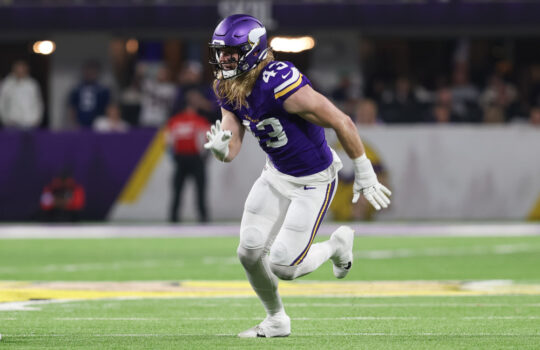



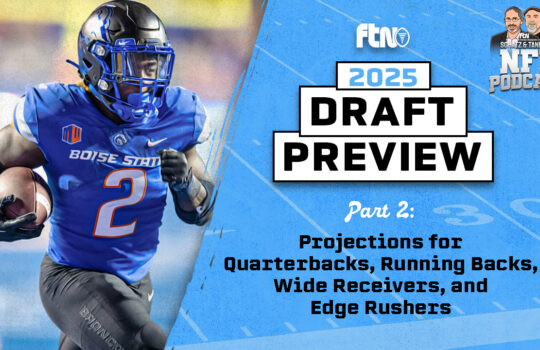

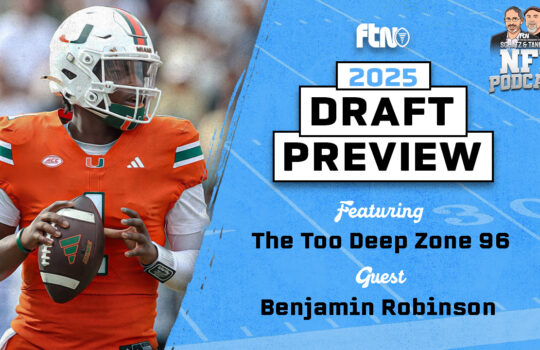









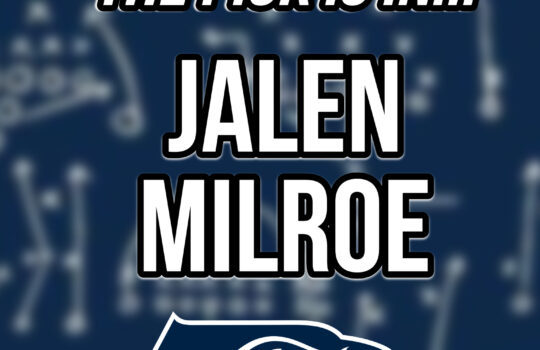

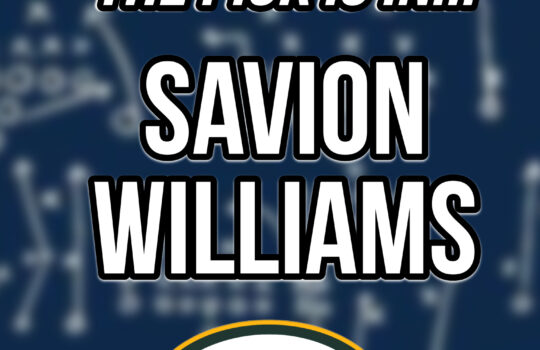
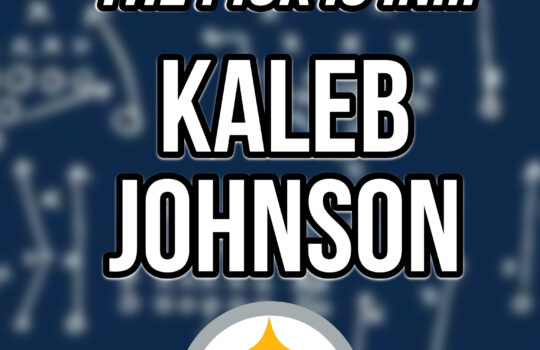

 New York Jets
New York Jets  New England Patriots
New England Patriots  Miami Dolphins
Miami Dolphins  Buffalo Bills
Buffalo Bills  Pittsburgh Steelers
Pittsburgh Steelers  Cleveland Browns
Cleveland Browns  Cincinnati Bengals
Cincinnati Bengals  Baltimore Ravens
Baltimore Ravens  Tennessee Titans
Tennessee Titans  Jacksonville Jaguars
Jacksonville Jaguars  Indianapolis Colts
Indianapolis Colts  Houston Texans
Houston Texans  Las Vegas Raiders
Las Vegas Raiders  Los Angeles Chargers
Los Angeles Chargers  Kansas City Chiefs
Kansas City Chiefs  Denver Broncos
Denver Broncos  Washington Commanders
Washington Commanders  Philadelphia Eagles
Philadelphia Eagles  New York Giants
New York Giants  Dallas Cowboys
Dallas Cowboys  Minnesota Vikings
Minnesota Vikings  Green Bay Packers
Green Bay Packers  Detroit Lions
Detroit Lions  Chicago Bears
Chicago Bears  Tampa Bay Buccaneers
Tampa Bay Buccaneers  New Orleans Saints
New Orleans Saints  Carolina Panthers
Carolina Panthers  Atlanta Falcons
Atlanta Falcons  San Francisco 49ers
San Francisco 49ers  Seattle Seahawks
Seattle Seahawks  Los Angeles Rams
Los Angeles Rams  Arizona Cardinals
Arizona Cardinals 

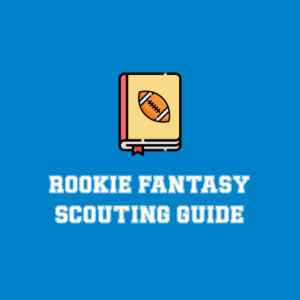






 Boston Celtics
Boston Celtics  Brooklyn Nets
Brooklyn Nets  Philadelphia 76ers
Philadelphia 76ers  New York Knicks
New York Knicks  Toronto Raptors
Toronto Raptors  Chicago Bulls
Chicago Bulls  Detroit Pistons
Detroit Pistons  Milwaukee Bucks
Milwaukee Bucks  Cleveland Cavaliers
Cleveland Cavaliers  Indiana Pacers
Indiana Pacers  Orlando Magic
Orlando Magic  Atlanta Hawks
Atlanta Hawks  Charlotte Hornets
Charlotte Hornets  Miami Heat
Miami Heat  Washington Wizards
Washington Wizards  Denver Nuggets
Denver Nuggets  Minnesota Timberwolves
Minnesota Timberwolves  Oklahoma City Thunder
Oklahoma City Thunder  Portland Trail Blazers
Portland Trail Blazers  Utah Jazz
Utah Jazz  LA Clippers
LA Clippers  Golden State Warriors
Golden State Warriors  Los Angeles Lakers
Los Angeles Lakers  Phoenix Suns
Phoenix Suns  Sacramento Kings
Sacramento Kings  Dallas Mavericks
Dallas Mavericks  Houston Rockets
Houston Rockets  Memphis Grizzlies
Memphis Grizzlies  New Orleans Pelicans
New Orleans Pelicans  San Antonio Spurs
San Antonio Spurs 










